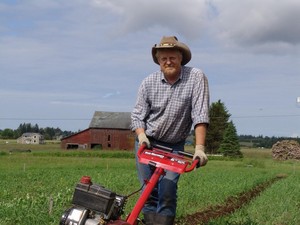14 Nov Sat 2009
Timing vs. Genetic "Space"
Back when I was coaching soccer, I taught my players to think in terms of time vs. space. For example, when the attacker is coming downfield with the ball, he (or she) has the advantage in timing because he (or she) is initiating each move. The defender will always be slower by at least a fraction of a second. If the attacker is also a good ball-handler, this becomes a distinct advantage. The primary job of the first defender must then be delay - giving up a little space but keeping the pressure on until the 2nd and 3rd defenders arrive on the scene. [BTW, notice the subtext here of splitting up the fields into discreet units with actors in each scene.] In essence, you can control time by controlling space. The inverse is true. You can control the space downfield if you slot a timing pass into space and your 2nd or 3rd attacker arrives on the scene the same time as the ball does. You can also create space (and problems) downfield by sending your 3rd attacker out wide to spread the defense - hence the concept of 3rd man running. The point is that you can control space by controlling time and control time by controlling space. It is a constant interplay, a push and pull that moves down the field in a flowing pattern that constitutes the beautiful game.
Yesterday, I had a discussion about permaculture with a colleague and it gravitated into evolutionary biology. We were discussing natural selection vs. artificial selection. I made the point about natural selection being essentially negative selection, while artificial selection is positive selection. [Yes, all you academic types can comment on my simplistic analysis if you wish. You can even take issue with my concept of the individual organism being the locus of evolution if you so desire.] For example, the wolves hang around the elk herd and observe which ones are a little slower, or limping, or a little spaced-out at the moment. Then they make one or two choices and see which ones respond. The result is dinner - about 20% of the time or less - wolves are far from perfect. This is natural selection, where individual organisms are selected against by something in the environment. The wolves don't shout out to the buff elk, "Hey Harry, you're looking pretty fit today! We won't mess with you!" Nor do the cows hear this positive affirmation and decide that Harry can suddenly buy them drinks and dinner. What happens is that the unfit specimens get eaten before they can pass on their genes in a significant amount in the gene pool. Over time, the fitter genes increase in frequency in the population. This is evolution by natural selection.
In artificial selection, the farmer picks out the best cattle (or corn or tomatoes or something else) that serves his (or her) purpose. The farmer then makes a selection which ones get to breed and which do not. This is positive selection, where individual organisms are selected for by something in the environment. Over time, the selected-for genes (not necessarily the fittest genes!) rise in frequency in the population. This is evolution by artificial selection. Notice that we already have a problem with fitness in the overall environment. What the farmer is selecting for may not necessarily be viable.
Now, since genetic differences come largely from mutations in DNA, selecting against a small number of individuals allows for a large amount of genetic variation to exist in the gene pool. If a gene pool consists of variants A, B, C, D, E, etc. and only A is selected against, B, C, D and E still exist in the gene pool and gene D may continue to reside in the gene pool, even though it confers no fitness. It is just a mutation that has not been subject to environmental testing. Most biologists are guilty of using the term "selected for" in their writing, but this is usually just imprecision in language. It is similar to talking about hypothesis testing, where the correct answer may be, "We cannot reject the null hypothesis," but the writer/lecturer may actually say, "We accept the null hypothesis." The imprecision is along the lines of President Bush saying, "Either you are with us in the war on terror, or you're against us." Of course, this was fatuous nonsense, since many countries were not with the US, but still did not support terrorism. In the same manner, selecting against one organism and its set of genes does not select for another organism and its set of genes.
If we think of these genetic differences lying about in the gene pool and not being subject to selection, we can think of them taking up "genetic space." Sometimes the term used is "junk" DNA. In the soccer analogy, these genes are controlling space and we can control them by timing. How do we do this? It really is quite simple. We select for traits we want. Anyone can see that stock breeding has achieved massive changes in dairy and beef cattle in the last 50 years. We can also see massive changes in plant varieties in the last few years also, as corporations, university research stations, and even small farmers extend their control over the livestock and plants they grow. They have shortened the time element of evolution by artificial selection. The result is that the "genetic space" is controlled and is even now being circumscribed. This is not to say differential mutations will not arise. Of course they will, as they are essentially random. However, we might want to think about our control of genetic space as we produce fewer and fewer varieties of crops.

